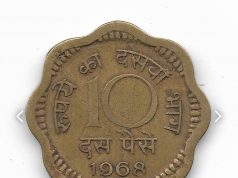We, the Government
 By HUGH & COLLEEN GANTZER
By HUGH & COLLEEN GANTZERWe were home-bound during the Lockdown. And yet we flew to
the ends of the earth and all around our own land. We used the wings of our minds, our six travel books, our fifteen bound volumes of clippings of our published travel articles, and all our photographs carried in them.
During this odyssey, through forty-six years of travel, a few places stood high-lighted in our memories. One of them is Ladakh’s Nubra Valley. It stretches to the north of the Himalayas, accessed through the highest motor road in the world, soaring to the Nathu La Pass, then down the other side. This trans-Himalayan legendary land is India’s own enclave of Central Asia. Here we saw phlegmatic single-humped Bactrian camels, descended from those who carried Kipling’s “ivory, apes and peacocks… Persian Pussy cats brought for sale… and musk”, on the Silk Route. These legendary ships of the cold deserts chomped on thorny thickets of Seabuck Thorn, relishing their leaves and their tart, juicy berries.
Now we learn that this shrub, with the Latin name Hippophae rhamnoides, does much more than keep horses’ coats glistening, which is what the name implies. It appears to be a wonder plant which could transform the abandoned high fields of Uttarakhand and bring new prosperity to our state. This is why we have listed its proclaimed virtues in bullet points.
Seabuck Thorn
• Is an exceptionally hardy plant able to withstand temperatures as low as -43C.
• Typically exists at altitudes of 2,630 m to 3,700 metres.
• Does not like shade.
• Prefers dry areas.
• Has an extensive and aggressive root system and is planted to control soil erosion.
• Fixes nitrogen in the soil, enriching it.
• Is planted at the bottom of dry river-beds to increase water-retention in north-western China.
• Grows to a convenient height of 6 to 9 metres thereby acting as both a protective hedge and a wind-break.
• Has both male and female plants and fertilisation is wind-borne.
• Produces berries 6 to 9 mm in diameter, soft and juicy.
• Berries, when pressed, produce a juice which separates into three layers.
• Berry juice’s top two layers can be processed to produce skin creams; the lowest layer is edible and can be used as juices or converted into jams and jellies, etc.
• Caused the Defence Research and Development Organisation, (DRDO) to establish a Seabuck Thorn processing laboratory to produce a multi-vitamin beverage for the Armed Forces.
• Is regarded, locally, as a virtual medicinal wonder plant, much as the neem is in the plains. It is credited with preventing infection, improving sight, slowing the ageing process.
• Produces a berry-oil which is said to be good for asthma, angina and high cholesterol.
• Has a soothing effect on stomach ulcers.
• Is of particular significance to all those exposed to higher than normal levels of radiation including members of our Armed Forces serving on our high, northern, borders.
We’ll stop here because we are not scientists who can certify to the benefits of this hardy plant. We have, however, personally experienced the efficacy of folk-knowledge. A painful sprain was cured by a poultice of an herb plucked from our hillside. At another time, a cut was healed by placing a leaf of another wild plant on it.
We also know that if our high fallow fields in, Uttarakhand are made productive again, our border villages will become alert and alive. That, in turn, will enhance the prosperity of our little state, its security; and that of the Nation.
India’s Prosperity and Security are also our responsibility because We are the Government.
(Hugh & Colleen Gantzer hold the National Lifetime Achievement Award for Tourism among other National and International awards. Their credits include over 52 half-hour documentaries on national TV under their joint names, 26 published books in 6 genres, and over 1,500 first-person articles, about every Indian state, UT and 34 other countries. Hugh was a Commander in the Indian Navy and the Judge Advocate, Southern Naval Command. Colleen is the only travel writer who is a member of the Travel Agents Association of India.)







